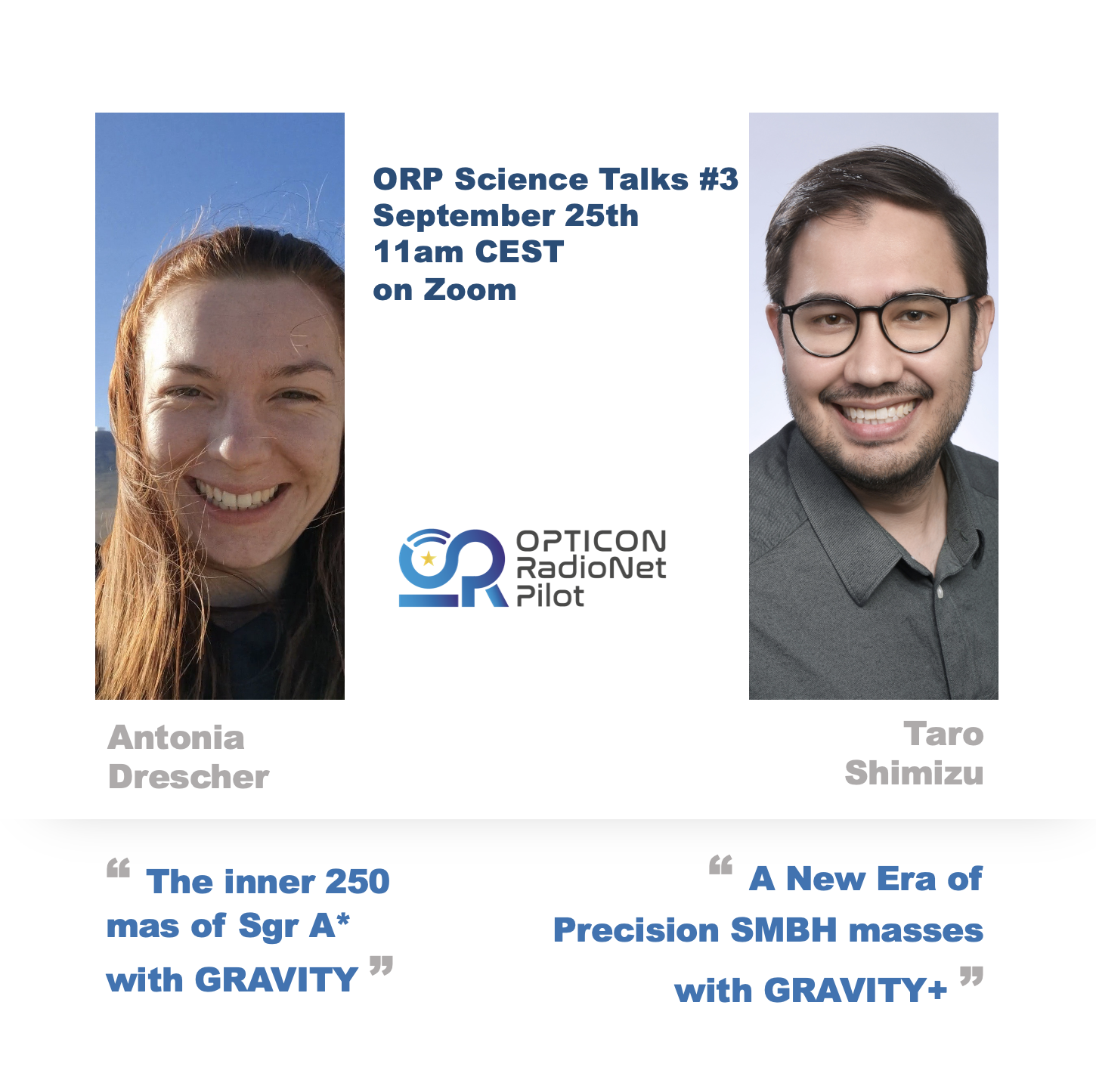
The third session of the "ORP Science Talks" will take place on September 25 at 11am CEST, featuring Antonia Drescher and Taro Shimizu. You are welcome to join by clicking here!
ORP Science Talks take place approximately every month on Zoom, providing the community (ORP and hopefully beyond) with the opportunity to present their work and scientific results. ORP members, share feedback on the ORP Science Talks or nominate yourself as a speaker at this virtual meeting with an email to outreach@orp-h2020.eu.
View recordings of the talks from the previous two sessions here and here.
Short descriptions of the next speakers' talks:
Antonia Drescher
The inner 250 mas of Sgr A* with GRAVITY
She will talk about the galactic center, which harbours the closest supermassive black hole, Sgr A*. It provides a unique laboratory to test general relativity (GR). After the successful detection of the first two effects of GR with the GRAVITY interferometer in Chile, she will talk about how we use stars that orbit Sgr A* to hunt for the third effect, the spin of the black hole. My talk will also cover “flares”, which are positional changes of hot gas that orbit Sgr A* at its event horizon. They provide excellent probes for the mass of the black hole and the physics in its environment.
Taro Shimizu
A New Era of Precision SMBH masses with GRAVITY+
Local scaling relations indirectly suggest that over cosmic time, supermassive black holes (SMBHs) and their host galaxies co-evolved together. Efforts to measure these scaling relations at high redshift to directly trace the co-evolution is difficult owing to the uncertain SMBH masses that primarily are determined through single epoch spectra. GRAVITY+ is currently upgrading both the GRAVITY instrument and the VLTI infrastructure that promises to bring a new era of high precision SMBH mass measurements out to high redshift. In this talk he will present the first high redshift observations from GRAVITY+ where we attempt to spatially resolve the broad line region (BLR) of a z~2 quasars and directly measure the SMBH masses. These observations are combined with CO (3-2) observations to obtain a complete picture of galaxy-SMBH coevolution during the peak of black hole and galaxy growth. He will conclude with an outlook for GRAVITY+ that will soon allow these measurements for many quasars across cosmic time.